THE SKY BLUE CEILINGS OF 121 HENRY ST (1889)
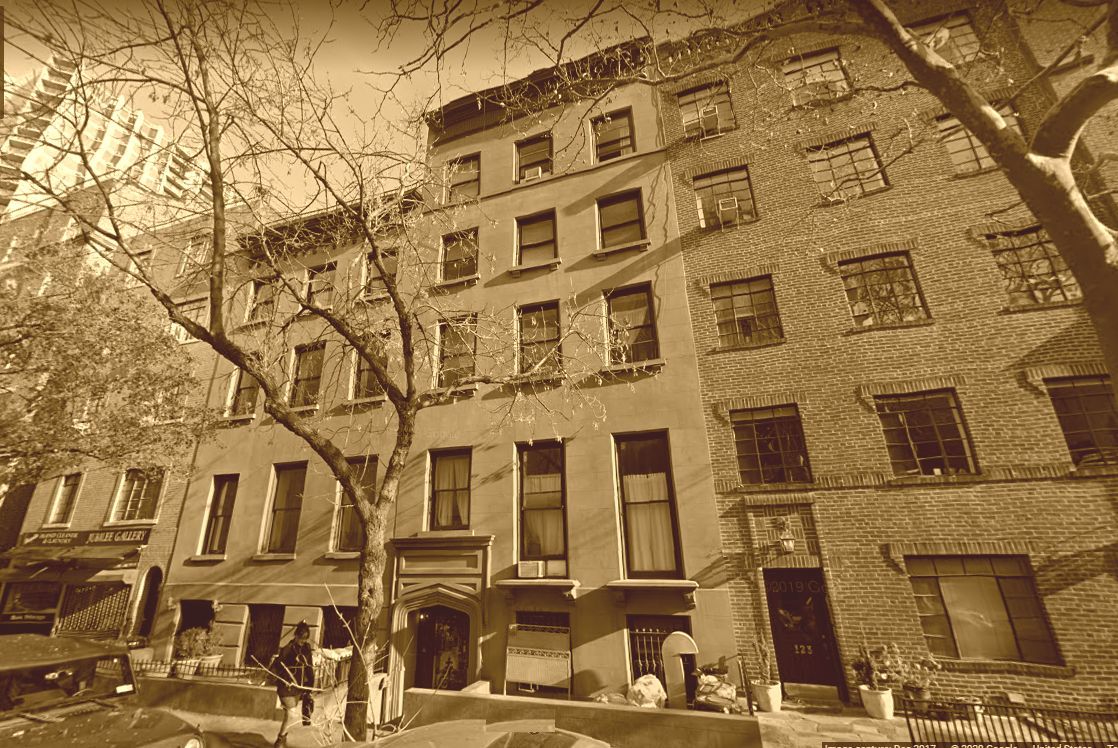
Brownstone Detectives investigates the history of our clients’ homes.
The story you are about to read was composed from research conducted in the course of one of those investigations.
Do you know the history of YOUR house?
********************************************************************************************************************************
In the late 1880s, the Brooklyn Daily Eagle started a series of articles which described – in great length and detail – the interiors of individual newly-built or renovated houses. These houses were usually brownstones belonging to those affluent or upper-middle-class members of society.
Not only did such articles describing the interiors of neighbors’ homes sell newspapers, but the articles also served as advertising directed at those in the market for a townhouse to have a home of their own.
These advertisement-articles were placed, likely at the expense of the designers responsible for the “interior decorations” being described, as each piece often ended with what readers wanted to know.
“Who did the work?”
WORK IS BY JOHANSMEYER & KOENKE, NEW YORK
The “three story brown stone residence,” at “121 Henry street, near Clark,” was owned by Henry L. Meyer, who – at the time – was a hotel keeper, but who would rise to the position of treasurer of the Consumers Brewing Company. Meyer lived in the house with his wife and two daughters.
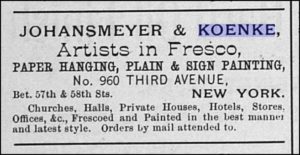
In 1889, Meyer, who had recently acquired the (what until then had been used as a) rooming house, embarked upon a whole-house renovation, employing the New York City designers Johansmeyer & Koenke.
Theodore C. Johanesmeyer and Bernhard Koenke were fresco painters who advertised their services both as fresco painters and decorators, referring to themselves in one ad as “Artists in Fresco.”
The two men, whose operation was based at No. 930 Third Avenue in New York City, would remain partners from the late 1870s through the late 1880s, working throughout the New York City area. They advertised their work in churches, halls, private houses, hotels, stores, and offices.
When the design team was finished with Meyer’s brownstone at No. 121 Henry Street, however, the Daily Eagle was noting that his home contained “exquisite decorations.”
The paper’s reporter then went on to describe every inch of Meyer’s house.
THE PARLOR
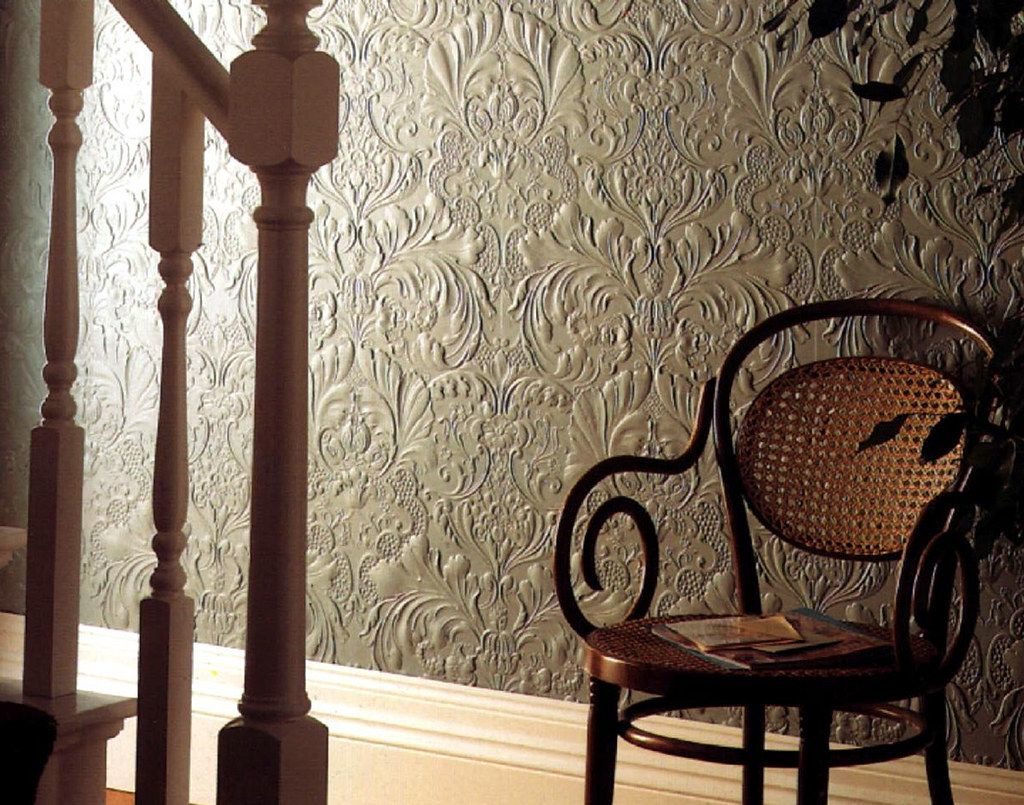
“The parlor side walls are papered in pressed paper, leather imitation, with gold cornices and ornamental picture molding. The ceiling is elegantly frescoed in sky color with tropical plants and emblems.
“On one side Art is represented by a bust, books, palette and brushes, and the other side Music, by a harpsichord.
“The front parlor ceiling is in sky effect, with scenery of flowers and tropical plants. The cornices are in blue, with gold work.
“The extension is in the same style, with the ceiling in different plants and flowers.
“The hall is papered in leather paper, of olive color, with the cornices in light brown and plaster ornamentation. The ceiling is frescoed in blue and the wide borders in three shades of buff colors. The woodwork on the entire floor is in mahogany.”
THE SECOND FLOOR
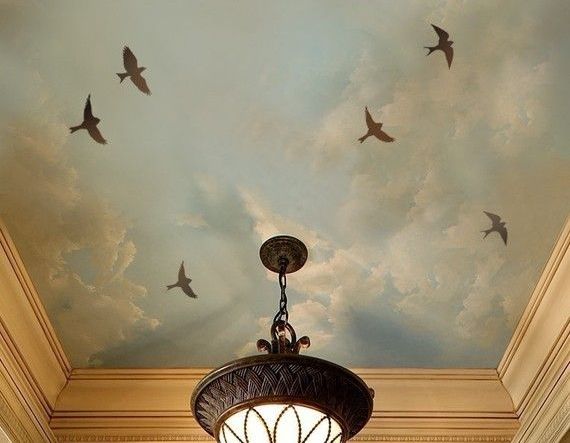
The second floor front room is papered in hand made paper, gold and blue. The cornices are gold and buff. The ceiling is in ivory color, with flowers and game in bronze and gold. The mantel is of brass, with tiled hearth.
“The back room sidewalls are in gold paper, with white flower figure and gold figured cornice. The ceiling is frescoed in ivory tint, with sky and rising sun, birds flying to and fro, flowers, etc.
“The ceiling in the extension is decorated with birds, lilacs, etc.
“The adjoining bathroom is highly wainscoted in white marble. The walls are in tiled paper. The ceiling is frescoed in water scenes, roses, sea plants; fishes, etc.
“The floor is of hard wood.”
THE THIRD FLOOR
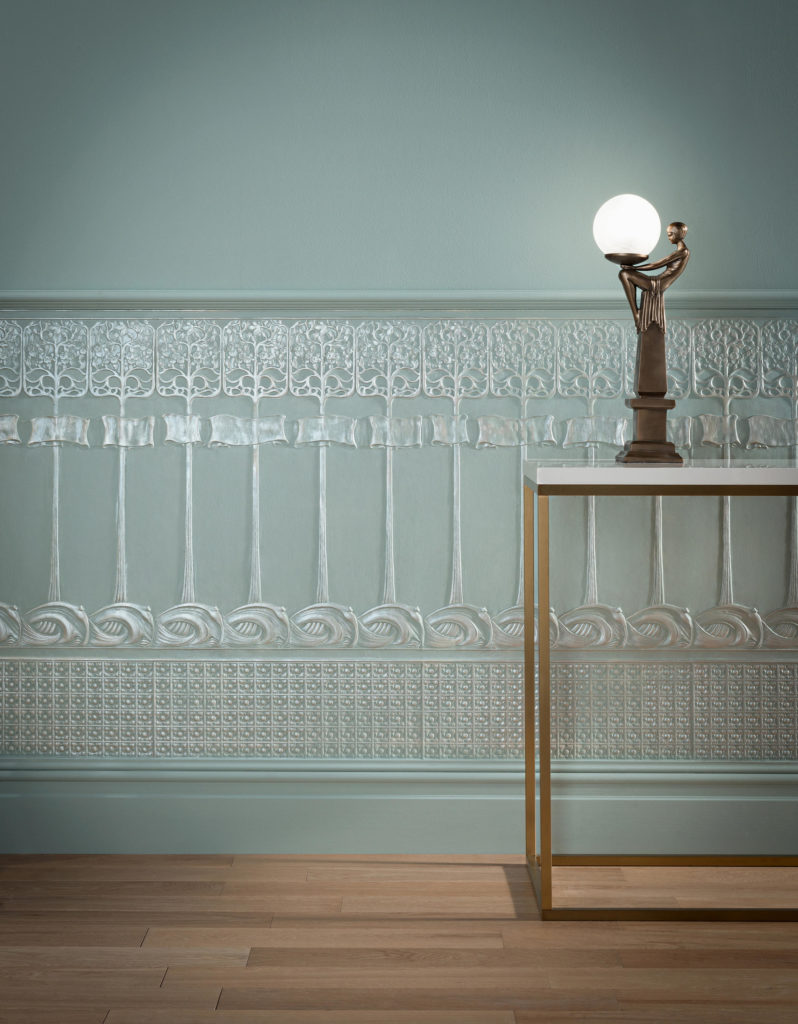
“The third story front (alcove) is papered in handmade paper, sky blue and silver, with a wide frieze. The ceiling is frescoed in classic figures with gold flowers and medallion sky blue.
“The rear room is papered in embossed paper, with the ceiling decorated with ornaments and gold.
“The extension and hall rooms are in the same style.”
THE SERVANTS’ QUARTERS & BASEMENT
“The servants’ rooms above are in gold papers and light colors.
“The basement dining room walls are decorated in oil. The ceiling is of ash wood, paneled in cherry slats. The woodwork is all grained in light ash. The kitchen is grained in ash imitation.”
And characteristically, the Daily Eagle ended its piece on No. 121 Henry Street, with the following:
“Work is by Johansmeyer & Koenke, New York.”
———————————————————————————————————————–
 Brownstone Detectives is an historic property research agency. Our mission is to document and save the histories of our clients’ homes. From our research, we produce our celebrated House History Books and House History Reports. Contact us today to begin discovering the history of your home.
Brownstone Detectives is an historic property research agency. Our mission is to document and save the histories of our clients’ homes. From our research, we produce our celebrated House History Books and House History Reports. Contact us today to begin discovering the history of your home.